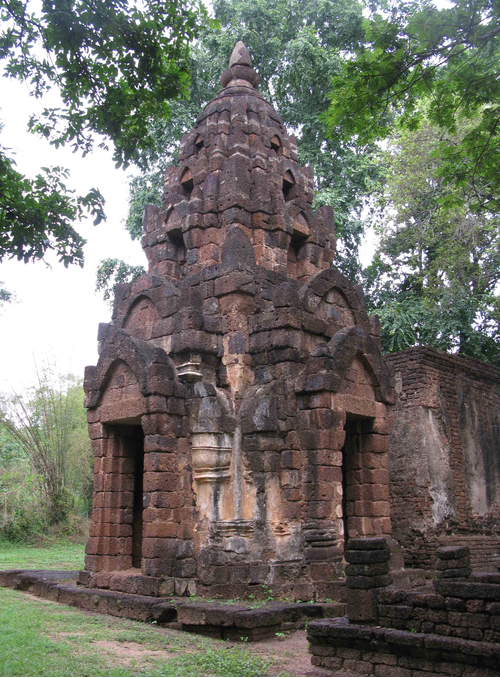ค้นหางานศิลปกรรม
ฐานข้อมูลศิลปกรรมในเอเชียตะวันออกเฉียงใต้
สถาปัตยกรรมปราสาทวัดเจ้าจันทร์
ประกอบด้วยปราสาทประธานก่อด้วยศิลาแลง มีแผนผังรูปสี่เหลี่ยมจัตุรัสออกมุม และมีปูนฉาบประดับตกแต่งผิว ฐานชั้นล่างสุดเป็นชุดบัวคว่ำ-บัวหงาย ที่เรือนธาตุมีซุ้มประกอบทั้งสี่ด้าน มีประตูทางเข้าด้านหน้าทางทิศตะวันออกเพียงทางเดียวด้านหน้ามีห้องสำหรับประดิษฐานรูปเคารพ ส่วนด้านอื่นๆ ตกแต่งเป็นประตูหลอก ถัดขึ้นไปเป็นชุดเครื่องบนของปราสาทสอบคล้ายรูปพุ่มและมีกลศประดับเป็นเครื่องยอด ต่อมาในสมัยสุโขทัย ศาสนสถานแห่งนี้ได้รับการปรับเปลี่ยนให้เป็นวัดทางพระพุทธศาสนา โดยการถมบริเวณโดยรอบของฐานปราสาท ทำให้ฐานชุดบัวคว่ำ-บัวหงายจมอยู่ใต้ดิน แล้วจึงสร้างวิหารศิลาแลงขึ้นที่ด้านหน้าของปรางค์ปราสาทพร้อมกับมณฑปศิลาแลงสำหรับประดิษฐานพระอัฏฐารศขึ้นทางทิศเหนือของปรางค์ ในมณฑปมีโกลนศิลาแลงพระพุทธรูปยืนพระหัตถ์แนบลำพระองค์ ๑ องค์ หลังคาที่เป็นเครื่องไม้ได้ผุพังไป พบเพียงชิ้นส่วนของกระเบื้องดินเผาสำหรับมุงหลังคาตกกระจายอยู่โดยรอบ ต่อมากรมศิลปากรได้ขุดพบพระพิมพ์ทำด้วยชิน ทรงเครื่องแบบกษัตริย์ และเมื่อขุดลึกลงไปอีกในระดับลึกพบโบราณวัตถุสมัยทวารวดี เครื่องถ้วยหริภุญไชย ลูกปัดแก้ว และชิ้นส่วนโครงกระดูกคน


